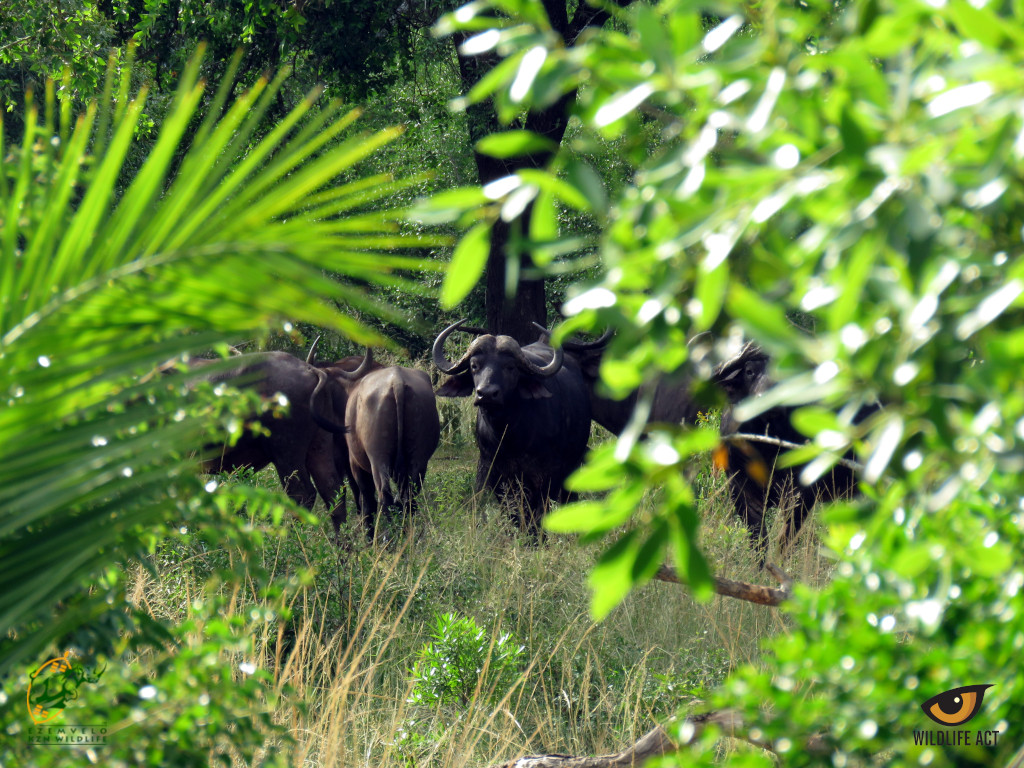
Towards the end of our first-ever ConservationTraining Course, our students delved into the “Track & Sign” and “CameraTrapping” sections of their modules. This included a bush walk whichincorporated the checking and downloading of our in-field camera traps, as wellas an in-depth look at the abundant tracks and signs we experienced around us.

One of our Conservation Course students, Saffron Goddard, expands on her experience of their bush walk:
“Yesterday, as part ofthe course, I was able to do my first bush walk into Hluhluwe-iMfolozi Park.The purpose of this walk was to put classwork into practice, which proved thatyou need to take every factor into account whilst in the field. We did a 2kmround trip and checked three of our priority species camera traps along theway.
We walked silently insingle file to avoid disturbing any animals nearby. The first camera trap wasat “the Swamp” - named as such due to the natural spring occurring here wherethe reeds flourish and abundant game frequent. This was a very good moment for me as I had been curiously wonderingwhat this area looked like, as the Priority Species Monitors spoke of it often.

Not far in we cameacross Buffalo dung, a skull and some other bones. To identify the dung welooked at its size, shape and colouration. Buffalo dung is particularly easy toidentify as it looks very similar to a cow pat, in that it is dropped in the sameway, has a similar colour due to preferred feed, and because Buffalo have asimilar digestive system to cows.
A mud wallow was also situated at “the Swamp”. Inside the mud were certain imprints suggesting that a Cape Buffalo had spent some time rolling around and cooling down in this particular wallow. Thinking about the terrestrial signs we learnt in class, and considering the dung and spoor, it was clear that a herd of Buffalo had recently passed through or were close by. The Buffalo skull we came across on the bush walk was estimated to be an old bull; signs of and the size of the “boss” (the thick helmet-like growth at the base of the Buffalo's horns) indicated this.

As we moved furtherthrough “the Swamp” we identified arboreal signs of mud-rubbing against a largeTamboti tree adjacent to the mud wallow. Remains of dry mud were left on thetree at approximately 2.5m high, indicating that an Elephant had been usingthis as a rubbing post after having had a good mud bath.
A rubbing post (orscratching post) is an important part of the post-wallow cleanse. Animals willoften find objects to scratch against to loosen old mud after a wallow as wellas to get rid of any particularly strong holding ticks.

Not far behind thattree we found a smaller rubbing post – a broken stump – this was a favourable one by the looks of it, as ithad a smooth shine and feel to it, showing that it was used fairly regularly.In addition, the post was quite small suggesting that it is preferred byWarthogs,Buffalo and Rhino.
Soon after that, we came across Elephant dung, in an area where certain trees had been subjected to “bark stripping” – the gouge marks on tree trunks are a common sign indicating the presence of Elephant in an area, where the fibrous bark pieces are stripped off a tree trunk in order to get to the juicy inner, nutrient rich layers.

On the way to check the second camera trap we found (and were able to positively identify) some Giraffe dung. We could clearly see the flick at the top half of the circular droppings and observed the scattered effect of the dung on the ground, indicating it had fallen from a great height. The size of the dung and the scattering effect is very different from that of Nyala or Impala dung. Towards the end of our bush walk we came back to an open area just before “the Swamp”, and whilst walking through the long grass we heard the call of the Oxpecker. (In our classroom sessions we learnt that this is a good indicator that a large herbivore may be nearby).

Keeping this in careful consideration, we treaded with caution. As we came closer to the same mud wallow we had passed earlier, we spotted a large herd of Buffalo all staring at us. At this time I learned that the smell of Buffalo is quite similar to that of an Elephant. For the whole hour I kept smelling it and thought an Elephant could potentially be nearby, but in actual fact it was most likely the Buffalo. We quietly and safely moved away from them and proceeded back to the vehicle”.
Saffron Goddard completed our Conservation Training Course in February 2020. Find out more about what our course offers and send us an application if you are interested in participating.
